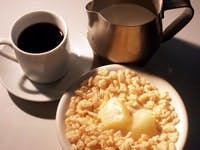Environmental and health concerns primarily govern the quality process in the food and beverage industry. In the near future, the food and beverage industry will be primarily influenced by the need to comply with EU legislation governing the discharge of industrial effluents. Demand for water and wastewater treatment equipment is poised to soar as food and beverage manufacturers move to build infrastructure compliant with directives such as the Integrated Pollution Prevention and Control (IPPC), Water Framework and the Landfill Directive.
“This legislation is likely to have a strong impact on this industry in the future as it is unlikely that the food and beverage industrial sites would have complied with necessary infrastructure in time before these regulations are rolled out,” said Frost & Sullivan Environmental Analyst Suchitra Padmanabhan.
“Expected to be in effect from October 2007, the IPPC requires industries to install equipment that meets the requirements under the Best Available Technology (BAT) directive, which provides a fairly rigorous test for all treatment equipment, thereby guaranteeing success to suppliers providing technologies that meet these criteria,” Padmanabhan added.
A high and constant requirement for water in the production process as well as related functions is presenting stable demand for water treatment equipment across the food and beverage industry. Also, the desire for process efficiencies and cost reductions is encouraging the reuse of water, especially in secondary processes such as boilers, steam generation, and washing and cooling towers.
Furthermore, food industry standards specifying that spent process water intended for reuse, even if it is for cleaning purposes, must be at least of drinking quality are resulting in demand for treatment equipment and encouraging technological innovations that provide suitable reuse solutions.
From $500 million in 2005, the water and wastewater treatment equipment market for the food and beverage industry is expected to reach $654.5 million in 2012. Despite such growth, an increasingly maturing market will throw up major challenges.
The traditional strongholds for the food and beverage industry such as Germany, France and the U.K. are experiencing signs of maturity, thereby restricting demand for treatment equipment in the long term. This is forcing equipment suppliers to explore newer regions such as southern Europe to sustain future demand.
Innovative solutions including diversified products, advanced technological options and efficient operational processes such as outsourcing contracts will also help maintain profit margins in a mature market. The challenge lies in being able to cater to the changing needs of the food and beverage industry such as the shift in investment towards replacements, upgrades and services with greater focus on cost efficiencies.
As opportunities decline, the competition among water and wastewater treatment equipment suppliers is increasingly being based on prices and innovative business strategies. Reducing the impact of price-based competition calls for solutions such as meeting specific technological requirements and the ability to undertake outsourcing projects.
In addition, a chief characteristic of the food and beverage industry remains its highly localized base. “The wide regional variations in the food and beverage industry will require an overall understanding of the market conditions as well as specialist knowledge of local conditions to be able to respond in a meaningful manner to the growing complexities of this market,” Padmanabhan said. “Therefore, region-specific information and expertise will be critical in being successful in this diverse market.”
Moreover, the food and beverage water and wastewater treatment market is characterized by highly fragmented competition with concentration levels in terms of equipment supply being very low at 18%. Large water companies such as Veolia Water have already entered into agreements with local participants to create strategic growth opportunities in this market.
Source: Frost & Sullivan


